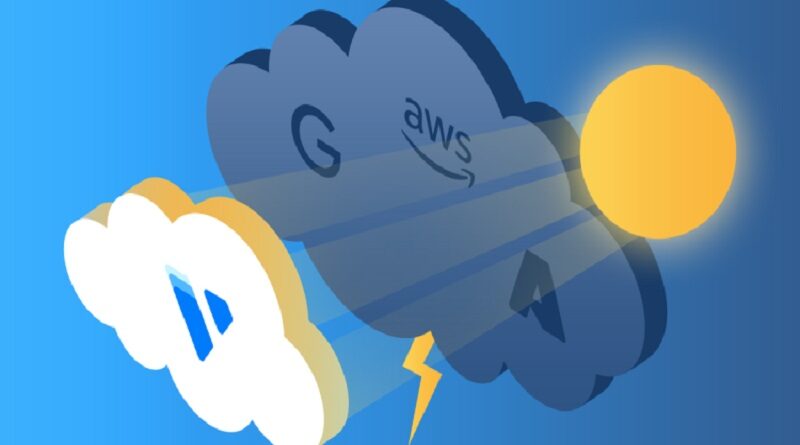Big Tech backlash gives rise to the independent cloud
Here we are, more than two years into the pandemic, and many of the sudden changes brought about by COVID-19 have become permanent. Among them is a deepened and growing dependence on cloud computing, accelerated by an unprecedented separation of businesses from specific physical premises.
While reliance on the largest public cloud vendors particularly AWS, Microsoft Azure, and Google Cloud has grown, so too have concerns about whether these are really the right bets for many organizations to make
For all their strengths, three significant problems with the Big Tech clouds have become clear.
1. They are overpriced
Over the past few years many cloud users have realized something that we at Vultr have long known — the Big Tech clouds are far more expensive than necessary. Simply said, they cost more than they need to for the services provided, and users end up paying for more services than they actually need.
Amazon’s earnings reports have shown the world that AWS generates billions in annual profits, with bandwidth for data transfer being the most egregiously overpriced service of all.
The Big Tech clouds’ excessively high prices have led to what venture capital firm Andreessen Horowitz (a16z) calls The Trillion Dollar Paradox.
As he wrote, “Across 50 of the top public software companies currently utilizing cloud infrastructure, an estimated $100B of market value is being lost among them due to cloud impact on margins — relative to running the infrastructure themselves. [Across] the broader universe of scale public companies that stand to benefit from related savings, we estimate that the total impact is potentially greater than $500B.”
The ultimate conclusion from a16z is a conundrum: “You’re crazy if you don’t start in the cloud,” and “you’re crazy if you stay on it.” Whether you are one of the largest cloud users in the world, or an individual developer, the odds are that you are overpaying for cloud computing.
2. They are overly complicated for most users
The vision for amazon.com has long been to be the “everything store,” and it’s clear that AWS is trying to be the “everything cloud.” However, while amazon.com seeks to be the low-cost, straightforward retail marketplace for everyone, AWS has become the high-priced, complex cloud. This is for the simple reason that AWS is focused on satisfying the complicated needs of the largest enterprise customers, and serving those with the largest cloud budgets.
Most developers and businesses don’t need the vast majority of the hundreds of products offered by AWS and the other Big Tech clouds. Nor do developers and SMBs have the time or specialized staff required to wade through the associated complexities.
For most users, the 80-20 rule applies to cloud computing, and it only takes a small portion of the Big Tech clouds’ products to deliver the vast majority of cloud utility. AWS boasts about the comprehensiveness of its offerings, but it can present an overwhelming and confusing user experience. Basic functions require excessive time and cost with the Big Tech clouds. Mistakes happen, leading to bugs, downtime, or leaks of customer data. For cloud customers, this hidden cost of complexity is immense.
3. They might compete with you
If one thing has become clear about Big Tech over the past fifteen years, it’s that they are ambitious and seek to make customers increasingly reliant on them. The Big Tech companies continuously introduce new products, and entrepreneurs building cloud-based services justifiably worry about these large companies cloning their ideas.
Long-established companies engaged in digital transformation also increasingly find themselves in competition with these large internet empires. For many cloud computing customers, the choice of provider is becoming as much about avoiding fueling a competitor as it is about meeting their cloud needs.
Big Tech casts a long shadow, but the sun is rising over the independent cloud
Today, cloud customers are left wondering whether they are really damned if they do, and damned if they don’t.
But I believe that the answer to a16z’s Trillion Dollar Paradox has been hiding in plain sight.
For years, independent cloud computing platforms such as Vultr have built a loyal following within the global developer community by offering cost-effective, high-performance, and easy-to-use cloud infrastructure. Vultr, in particular, has flown under the radar, as it is a completely bootstrapped, profitable business that never needed to raise venture capital.
Last year’s IPOs in the sector naturally brought increased attention to independent cloud providers, as companies like DigitalOcean and Backblaze became public. More importantly though, it’s the quiet evolution of the capabilities of independent clouds that marks the dawn of a new era. Some independent clouds have transitioned from an early narrow focus on providing inexpensive virtual machines into comprehensive platforms that address the full range of users’ fundamental cloud compute, cloud storage, and networking needs.
Vultr’s offerings have certainly evolved in this way, and the operating efficiency that has enabled the company to bootstrap itself to scale has also enabled a broader set of capabilities. Unlike other independent clouds, Vultr is able to offer bare metal servers in addition to cloud compute instances, meeting the needs of users seeking cloud economics and cloud provisioning along with the highest level of control and efficiency. In addition, Vultr has been able to significantly grow its global footprint. Over the past six months Vultr has expanded to 22 global locations, including new sites in São Paulo, Mexico City, Stockholm, Warsaw, and Madrid.
As independent cloud providers mature, they will increasingly be viewed not just as easier-to-use and lower-cost alternatives for small businesses, but as the price-to-performance optimizing choice for a large number of enterprise use cases. Some businesses will see independent clouds as a way to broaden their vendor portfolio, lowering concentration risk and reducing their overall costs through a multi-cloud strategy. Others will leverage independent clouds as efficient backup infrastructure to limit the business impact and cost of outages. Still others will embrace independent clouds just for their straightforward and predictable pricing, and to avoid the high bandwidth charges of Big Tech clouds.
Whatever your specific cloud goals are, pay attention to the emerging category of independent cloud providers. As with all sectors of technology, the features that initially draw users to the largest vendors eventually become available in more cost-effective and user-friendly ways through newer, disruptive providers. This market evolution has already occurred in cloud computing, even though most users have yet to benefit from the disruption.
a16z’s Trillion Dollar Paradox demands a solution, and independent cloud computing platforms such as Vultr are poised to meet the needs of global users who have until recently been at the mercy of Big Tech.




